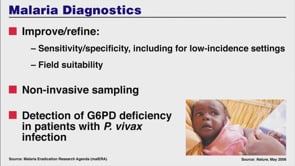Keystone Symposia’s “The Science of Malaria Eradication” – 2014: Complete Series
Collaborator(s): Keystone Symposia on Molecular and Cellular Biology, United States
Published: 02/02/2014
The MESA Correspondents are early career volunteers who bring you cutting-edge coverage from malaria conferences in real time. The summaries of the new learnings are shared online, expanding access to the event. The MESA Correspondents program is a collaboration between MESA and the conference organizers.
This report from the Keystone Symposia 2014 “The Science of Malaria Eradication”, which took place in Merida, Mexico, on February 2 – 7, 2014, is brought to you by the MESA Correspondent Kate Whitfield.
This Keystone Symposia meeting provided a comprehensive look at the cutting edge of the science of malaria eradication as it advances. For the first time since the paradigm shift from malaria control to the interruption of transmission, research, development, innovation and lessons learned will all be captured. The central goal of the meeting is to provide a unique and needed space for malaria eradication scientists to share new information and advance the scientific debate. As the field develops and results emerge, so too will the questions which need to be answered. The meeting facilities cross-fertilization among multiple disciplines that have a role in advancing the science of malaria eradication.
In an environment conducive to creative thinking, an anticipated outcome of the meeting is the generation of ideas and the next priorities for the scientific community to tackle. Other disease eradication efforts, past and present, have taught us the critical role of research and development. The publication of the malaria eradication research agenda (malERA) in 2011 laid the foundation for this R&D effort. This meeting serves as a significant milestone in the continual development of this research agenda. By showcasing new evidence, emerging data and new challenges, the meeting aims to catalyze ideas across multiple disciplines a well as new research activities in the field.
Read the full series of reports from the 2014 conference.
THEMES: Asymptomatic Reservoir | Basic Science | Capacity Building | Diagnostics | Drug Resistance | Drug-based Strategies | Epidemiology | Genetics and Genomics | Immunology | Impact of Interventions | Modeling | Monitoring & Evaluation | Operational Research | Surveillance | Vaccines | Vector Control



